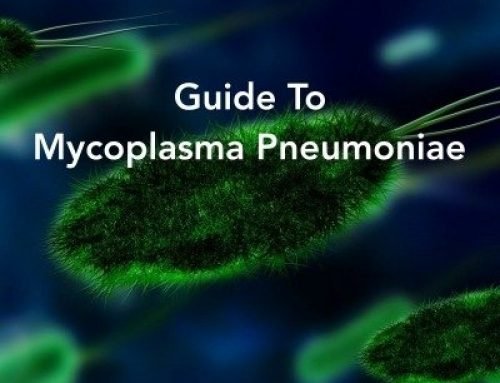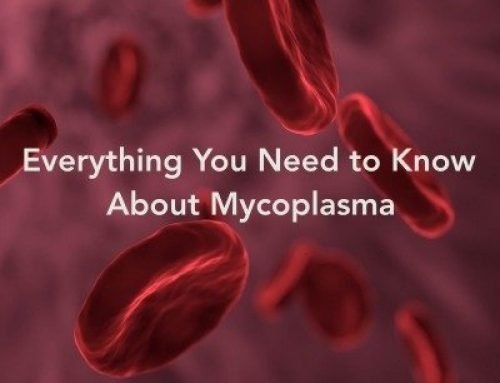High Cholesterol- Causes & Symptoms
High Cholesterol- Causes & Symptoms
As explained on Mayo Clinic, cholesterol is a wax-like substance present in the lipids (fats) in our blood. Although the body needs it in order to create healthy cells, when its levels become too high, one is at an increased risk of heart illness and stroke. To illustrate, high levels of cholesterol can contribute to the creation of fatty deposits in the blood vessels and with time, these deposits may impede the blood flow through the arteries and prevent the heart from getting the oxygen-rich blood it requires to function 100 percent.
It is pivotal to note that high levels of cholesterol may be an inherited condition or develop as a consequence of an unhealthy lifestyle. In most cases, with the adequate approach, it can be kept under control or treated completely, usually by adopting a healthier diet and taking the necessary medications.
In order to increase the awareness for this health problem which usually has no symptoms (it can be seen on a blood test), this article will focus on reviewing the major triggers associated with it and how it can be treated.
Good vs. Bad Cholesterol
As noted on Mayo Clinic, cholesterol attaches to proteins while passing through the blood and “lipoprotein” stands for this mixture of proteins and cholesterol. According to Health Line, it is crucial to explain the difference between “good” and “bad” cholesterol, terms that we regularly hear, but we are not sure what they actually represent. The low-density lipoproteins are often referred to as bad cholesterol and high levels of it can cause heart problems if not treated. On the other hand, the good cholesterol stands for the high-density lipoproteins and it transfers the cholesterol from other body parts back to the liver where it is further eliminated from the body. Its levels should be kept optimal in order to preserve the overall health. One is considered to have healthy levels of cholesterol if both the bad and good remain below 200 mg/dL.
What Can Lead to High Cholesterol?
Without doubt, as previously mentioned, genetic factors may bring about high levels of bad cholesterol due to the cells being unable to expel the bad cholesterol from the body properly or they increase the liver’s production of it. Other including factors are poor physical activity, unhealthy diet, and overweight problems like a BMI of 30 or higher and large waist circumference.
When it comes to unhealthy diet, it stands for a type of nutrition which is abundant in saturated and trans fats from animal products and processed crackers and cookies, as well as full-fat dairy, as seen on Mayo Clinic. Moreover, smokers are more prone to experiencing high levels of bad cholesterol as cigarettes harm the blood vessels’ walls and make them more prone to fat deposits. Smoking is also known to decrease the good cholesterol levels. High levels of sugar, which is common in diabetics, may lead to high levels of cholesterol and may hurt the arterial lining too.
Possible Complications
Unfortunately, when left untreated, high cholesterol can set off atherosclerosis, a condition characterized by excessive deposits of cholesterol and other substances on the arterial walls, also known as plaque. This plaque can impede the blood circulation through the arteries and prompt the following complications, as suggested by Mayo Clinic:
- Pain in the chest
When it is the coronary arteries that are impacted by plaque, chest ache or angina can develop.
- Stroke
If the blood flow to the brain is disabled by a blood clot, a stroke usually ensues.
- Heart attack
When plaque ruptures, it creates a blood clot which disables the blood circulation or plugs the artery downstream and a heart attack may occur due to the lack of blood going into the heart.
Prevention Is Key
As pointed out on Health Line, one helpful method to maintain optimal cholesterol levels is to follow a diet that is good for your heart, i.e. one that is low on saturated fats (the body transforms them into cholesterol) found in fatty meat, baked goods, hydrogenated oils, margarine, and dairy. Introduce more whole grains, veggies, vegetable oil, soy, fatty fish, fruits, nuts, and lean meat.
Furthermore, regular exercising and losing surplus weight play their role in one’s cholesterol levels. Opt for half an hour of workout on most days for low bad cholesterol and high good cholesterol and this will also help you to shed some extra pounds and consequently, improve the cholesterol levels. Remember, even 5 to 10 percent of your weight can do wonders for the levels of cholesterol! Last but not least, avoid consuming excessive amounts of alcohol and avoid smoking!
What Is the Treatment Plan for High Cholesterol?
The therapy for an individual who is diagnosed with high cholesterol is conditioned by one’s levels and other associated risks, as noted on Medical News Today. The first steps are improvements in diet and exercise whereas statins are prescribed to individuals who are considered more prone to heart attacks.
Statins are meds aimed at reducing cholesterol and other ones include cholesterol absorption inhibitors, resins, niacin, and fibrates. Some patients may benefit from the use of statins; however, a lot of people who take them experience their negative side effects like myopathy and tiredness and also put them at a higher risk of diabetes.
According to Health Line, there are specific natural cholesterol reducers that your doctor may recommend so that you can keep the condition under control. Let us take a look at some of them:
- Soluble fiber
Did you know that soluble fiber, which breaks down into a gel in liquid, has the power to decrease the absorption of cholesterol? It can be obtained from pears, peaches, oranges, potatoes, asparagus, oatmeal, kidney beans, and whole wheat fiber. The recommended daily dosage for men aged 50 or younger is 38 grams whereas for men over 50, the dosage should be 30 grams. For women aged 50 or younger, the dose is 25 grams whereas for those over 50, the dose is 21 grams.
- Ginger
A study from 2014 found that ginger has the capacity to decrease the cholesterol and triglycerides whereas a study done in 2008 proved its ability to lower the bad cholesterol and elevate the good one. Feel free to add it raw to different foods or take it in supplement form.
- Flaxseed
Flax is a blue flower which is grown in temperate climate and its seeds and the oil made from them are abundant in omega-3 fatty acids that are known to possess a variety of health advantages, including the power to boost the good cholesterol levels. For optimal results, make sure you use it ground or in oil form, not whole. This is because the body is unable to dissolve the seeds’ outer shell.
- Red yeast rice
Have you heard of this type of rice? It is actually white rice which is fermented with yeast and it is commonly used in Chinese cuisine and natural medicine. Supplements containing it have been found to decrease the cholesterol with the help of monacolin K present in it. This is a chemical with the same composition as lovastatin, a medication for lowering cholesterol. Unfortunately, the red yeast rice being sold in the U.S. does not contain it due to an FDA decision that monacolin K is a medicine which cannot be sold as a supplement.
- Soy protein
Foods that contain soy, for example, soy milk, tofu, and steamed soy beans are rich in lean protein so consuming them instead of high-fat foods like beef can decrease your overall intake of cholesterol.
Insurance
Embry Women’s Health is committed to providing quality, affordable health care. We’re in-network with all major insurance plans, including Aetna, Blue Cross Blue Shield, Cigna and UnitedHealthcare. No insurance? No problem. We offer a simple fee schedule for those who wish to pay out-of-pocket. Click the button below for our complete list and more information:














Leave A Comment